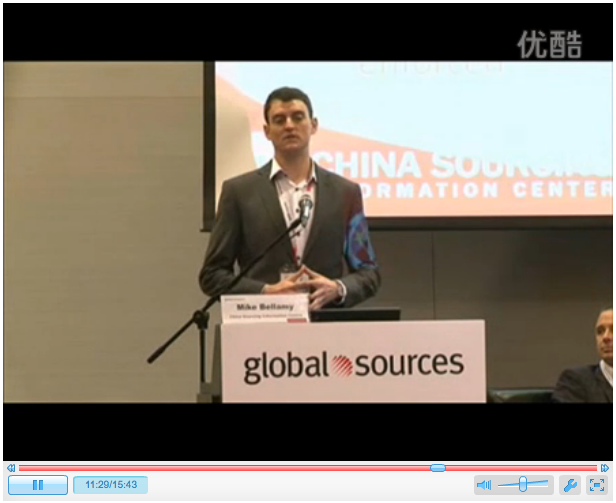I just watched a video of Matthew Kowalak, an expert in Chinese law who runs Southern Perspective SZ. He describes the main three types of dispute resolution techniques (litigation, arbitration, and mediation) that are available to foreign buyers in China.
His presentation is part of the “Hot Sourcing Topics of 2012” free seminar organized by Global Sources (at the same time as their trade shows).
Here is the video that was posted by the CSIC on Youku (a Chinese competitor of Youtube):
For those who don’t have 15 min. to watch it, I wrote the most interesting takeaways below.
The lawyer who writes your initial contract will add a term about the type of dispute resolution. Here are your options:
1. Litigation
- Lower lawyer fees and faster than in the US.
- If you have a strong and specific contract (which addresses the major risks), you have good chances of winning.
BUT…
- Enforcing the judgment can be a challenge. I can be difficult to recover assets if they are not precisely identified.
- You are killing the relationship forever with your supplier if you sue him.
- Chinese judges look for what is fair. If the contract does not address the problem precisely, the judge might decide on a 50/50 split in responsibility.
(You can find more information about litigation in this article from the China Law Blog).
Two types of alternative dispute resolution techniques (presented below) are gaining in popularity, in part because they are less confrontational.
2. Arbitration
- Arbitration is still a formal process. But it is relatively faster (3 or 4 sessions are generally enough).
- The arbitrator acts as a judge, and takes decisions that are binding for both parties. Once this process has started, parties can’t stop it.
- Again, “50% of the problem will be the enforcement”.
(You can find more information about arbitration in this article from the China Law Blog).
3. Mediation
- This is a more informal process. It is “voluntary, non binding, confidential, and flexible”.
- You can still go for another dispute resolution technique after mediation. So this is often used to clarify what each party’s position really is, before going for litigation or arbitration… or simply settling.

